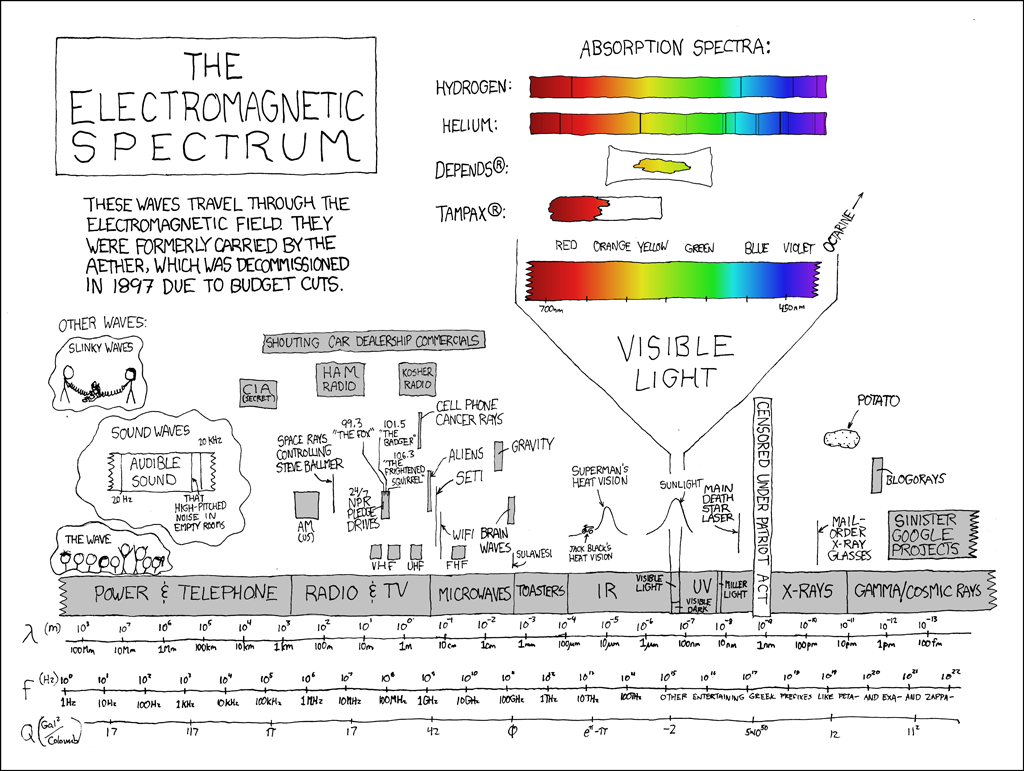James thought sense could be made of the idea of immortality, that some version of consciousness could be thought to survive death. Or at least he thought that brain death was not necessarily the complete death of consciousness. Perhaps there was some general form of consciousness, one consciousness, that beamed like light. James speculated that brains were lenses that changed the nature of that light and created individual consciousness. Brains, then, did not cause thoughts or consciousness (in what he called a productive function); instead brains had a transmissive function, akin to how vocal chords constrain air to produce a voice but do not themselves produce the voice.
James challenged those puritans of science who thought that the brain produces consciousness. “’Thought is a function of the brain’” for them– just as, “’Steam is a function of the tea-kettle,’ [or] ‘Light is a function of the electric circuit,’ [or] ‘Power is a function of the moving waterfall’.”
In contrast, those who thought the brain had a transmissive function saw the brain as an apparatus for letting consciousness loose upon the world.
James looked to Shelley’s Adonaïs: An Elegy on the Death of John Keats, Author of Endymion, Hyperion, etc in order to make his point: “Life, like a dome of many-colored glass,/Stains the white radiance of eternity” (stanza 52). The brain, according to James, was a threshold like this many-colored glass.
The Greek subtitle of Shelley’s poem is from the Epigram on Aster, which Shelley was translating at the time of Keats’ death: “Thou wert the morning star among the living,/Ere thy fair light had fled;/Now, having died, thou art as Hesperus, giving/New splendour to the dead.”
![]()
⁂
I live in Europe where the frequency in which power utilities transmit electricity, that is, waves of electrons, or electric charge, is 50 Hz. In most places, in other words, a wave of electrons cycles 50 times per second.
If an ocean wave hit the shore 6 times every minute, its frequency would be .1 times per second, or .1 Hz.
A heart with a pulse of 60 beats per minute is 1 Hz.
![]()
The US transmits electricity at 60 Hz. The waves hit 10 times more times per second than in Europe.
In either case, the pulses are coming too fast to perceive consciously. But, if you record your TV with a video camera, in most cases you will observe a pulsating, flicker effect due to the difference between the frequencies of the recording device and the 50 or 60 Hz. pulse of the television.
⁂
I had a student last year who was allergic to “electricity, electromagnetic radiation, and wireless internet.” She lives in a home completely free of electricity, except for an old computer she uses for limited periods each week. I never saw her; we communicated exclusively by email.
James would have appreciated the situation of my former student. Her example suggests not only that thoughts are embodied, but that thoughts are physical things—or at least, that they exist at a physical level. This example also suggests how human thought is closely bound to technology, that it is connected to our electrified universe. In the case of my former student, the most likely culprit is the technologically produced electrical energy interfering with the electrical and chemical pathways that regulate homeostasis in her brain and body, in her psyche and soma.
Some of this may sound strange, until one considers that waves themselves also carry energy. Photons, for example, are the fundamental unit of light; they propagate with different frequencies that are characteristic of different forms of electromagnetic radiation or energy.

Unlike light, utility power is transmitted by moving an electrical charge; that is, a wave of electrically charged particles. Such a wave generates a magnetic field.

⁂
Page 2 of 4 | Previous page | Next page